Marketing communications SECTION 22. 1 What You’ll


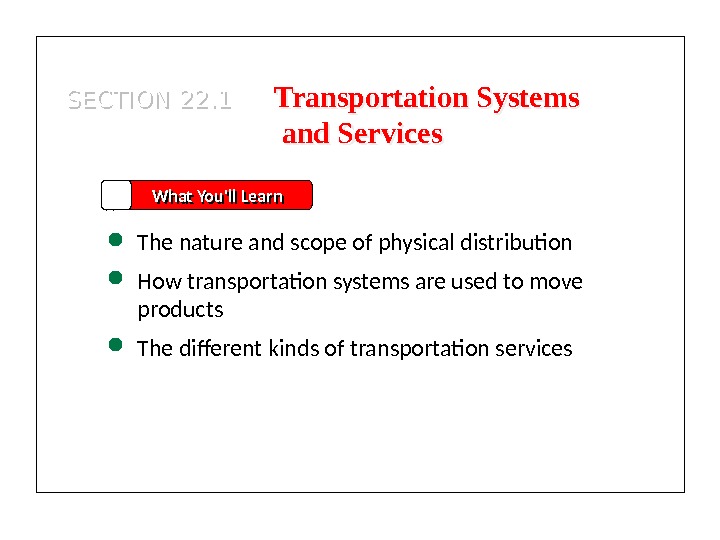
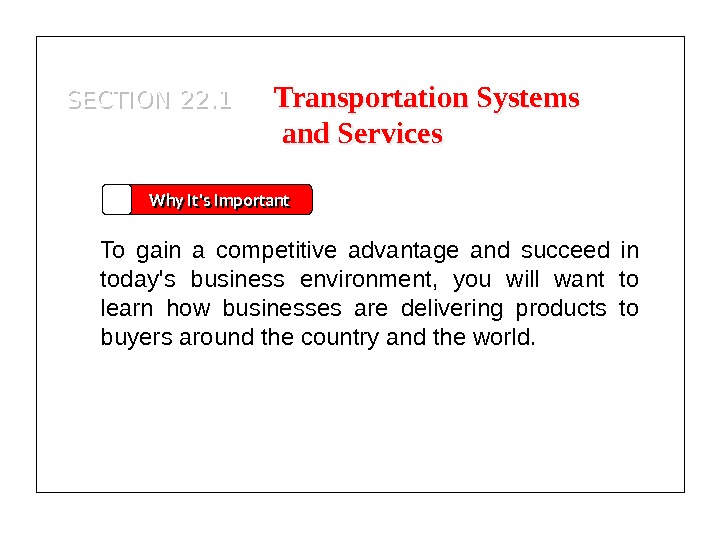
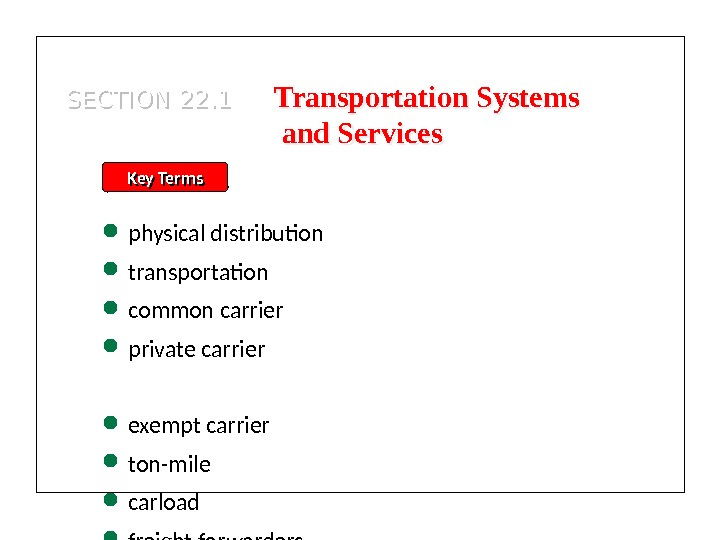
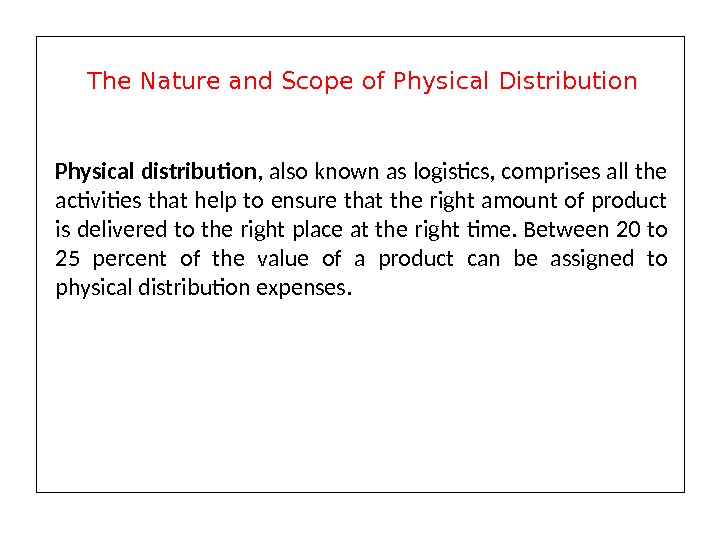
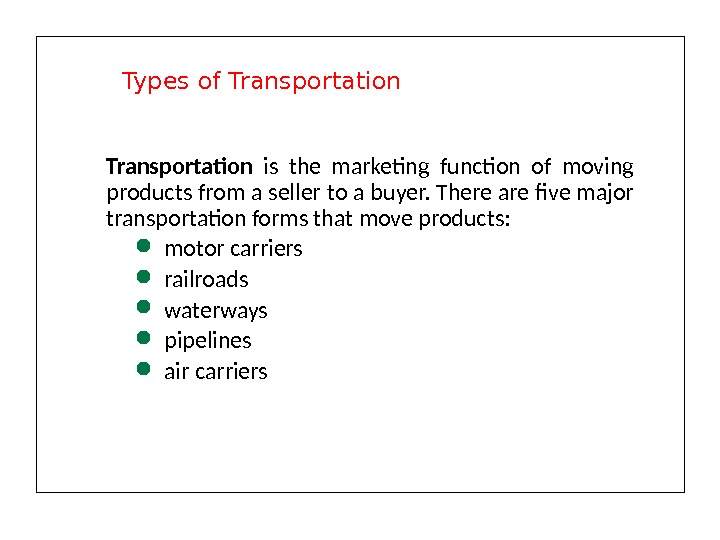
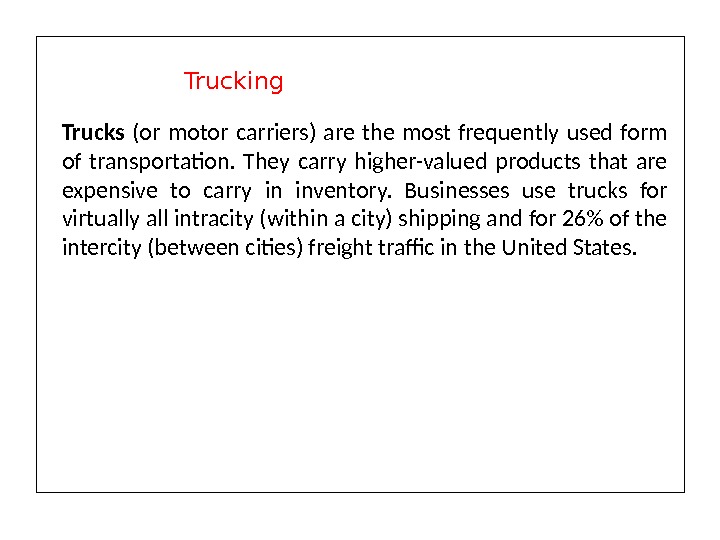
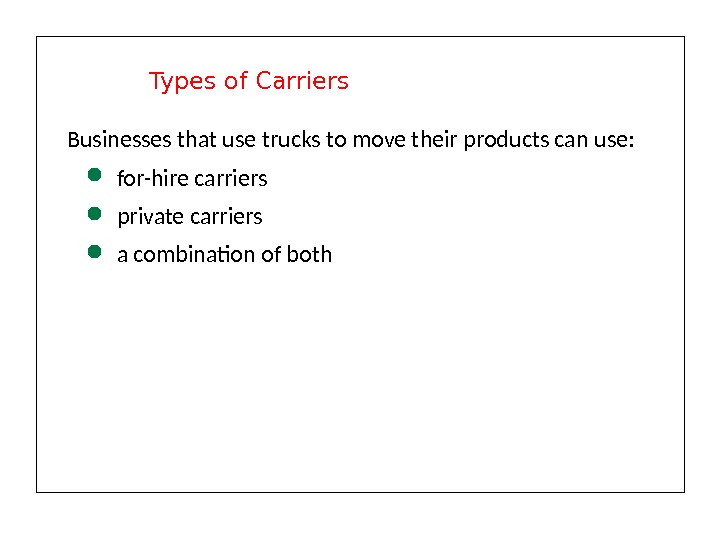
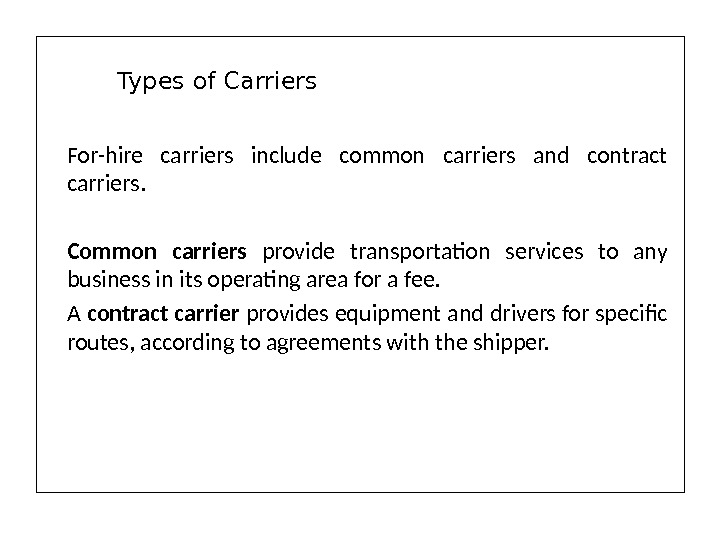
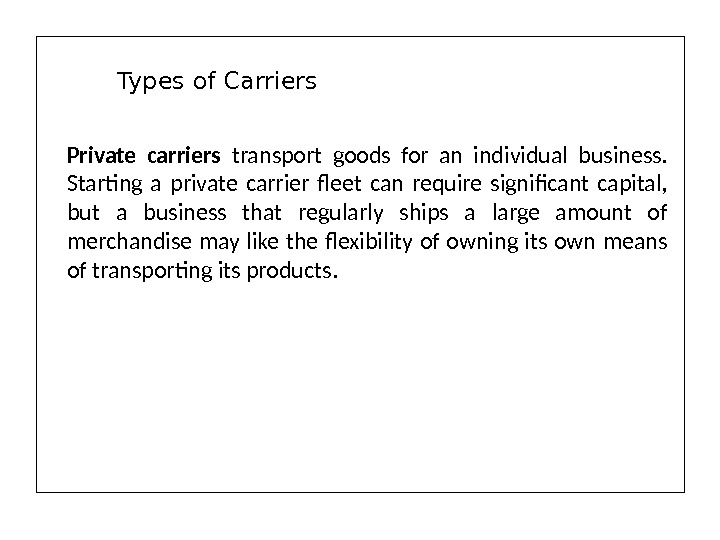
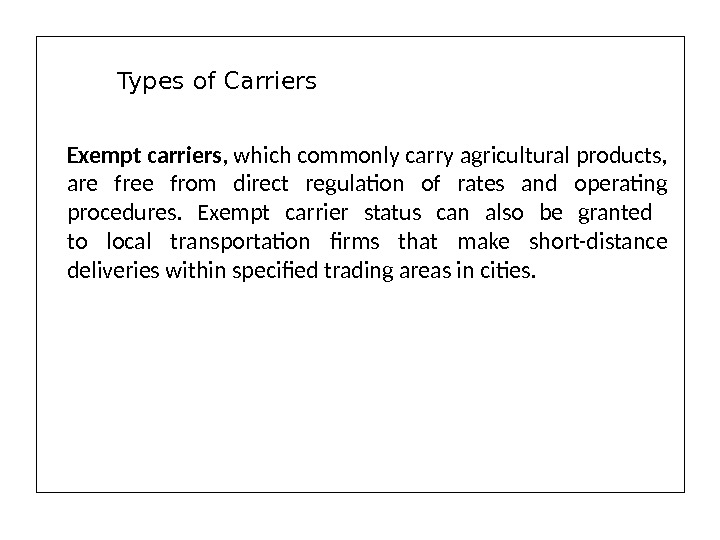
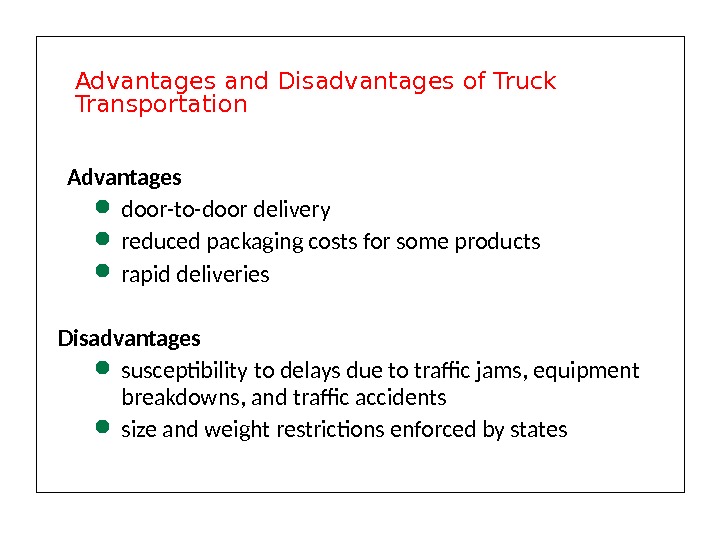
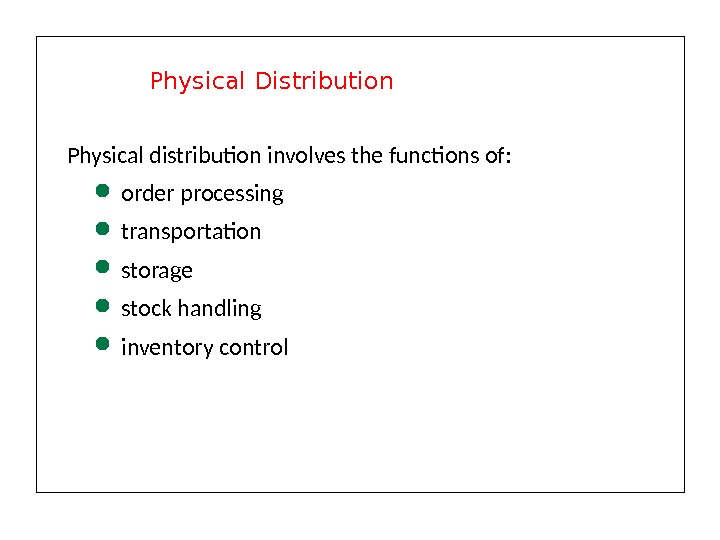
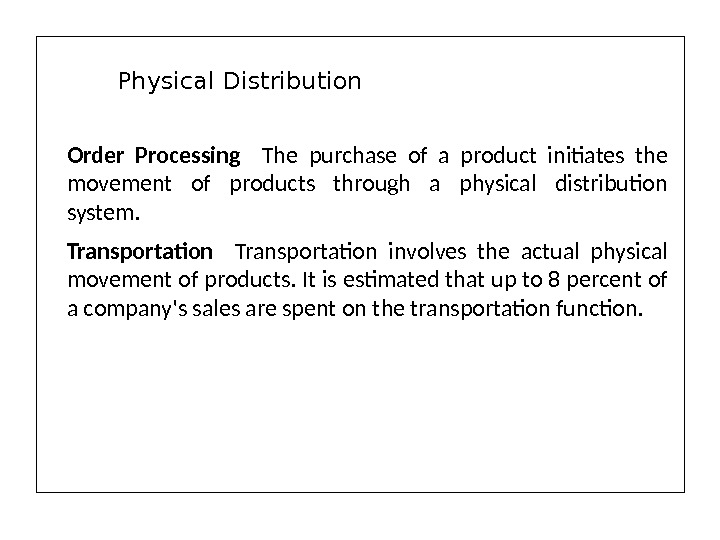
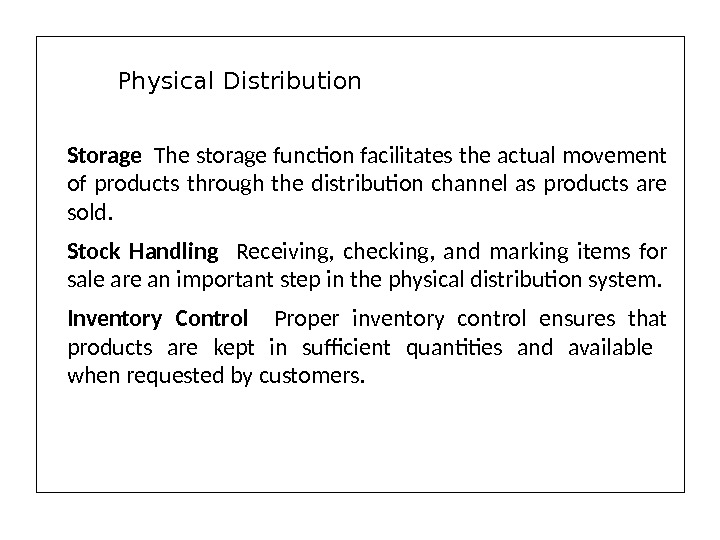
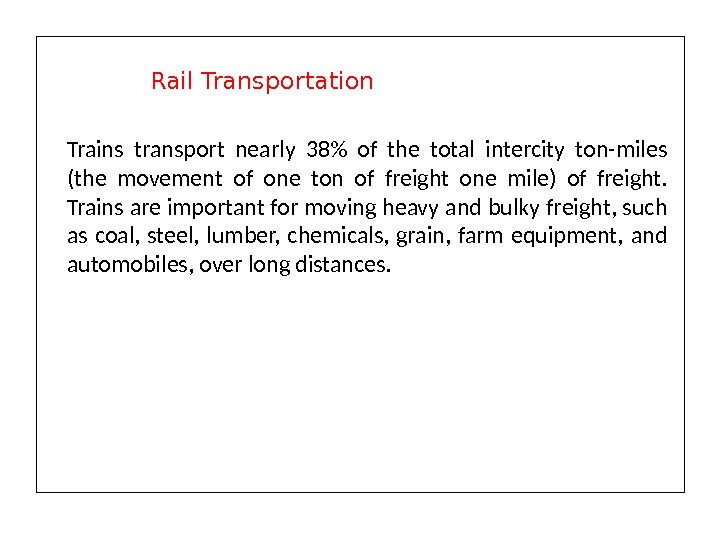
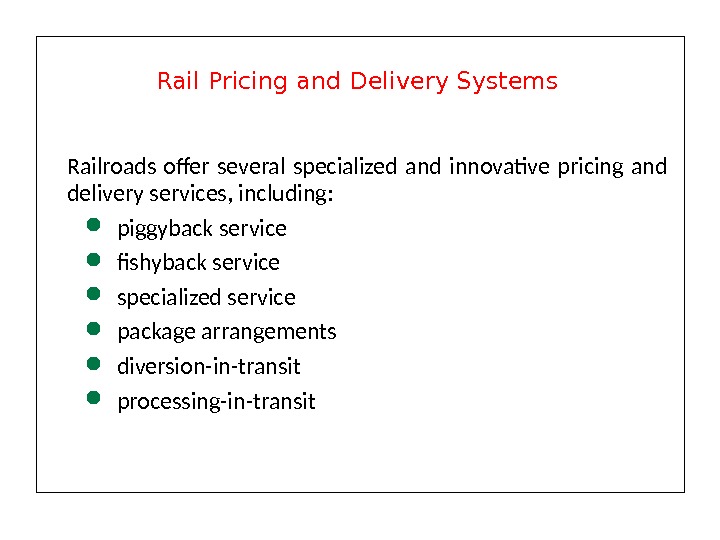
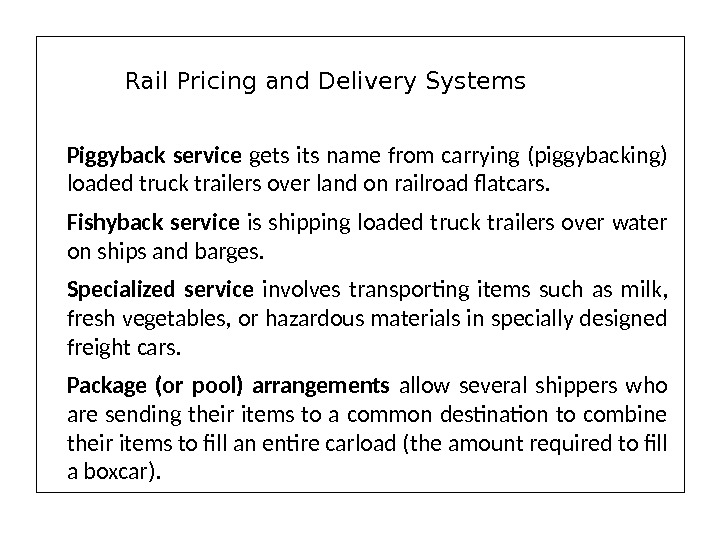
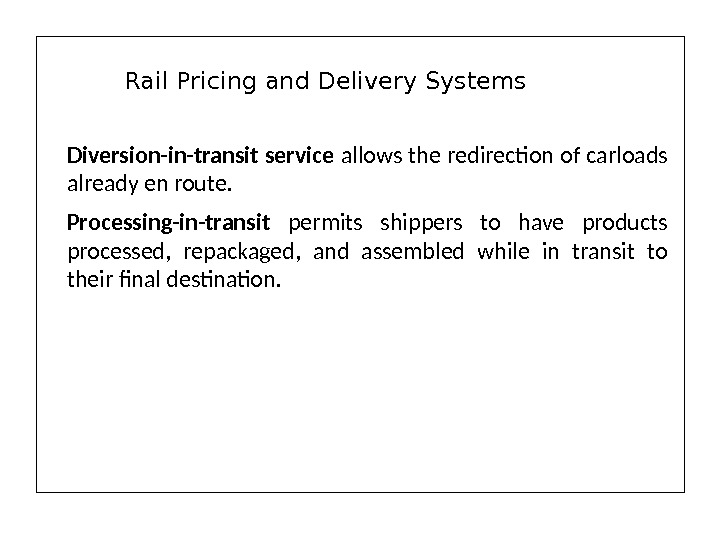
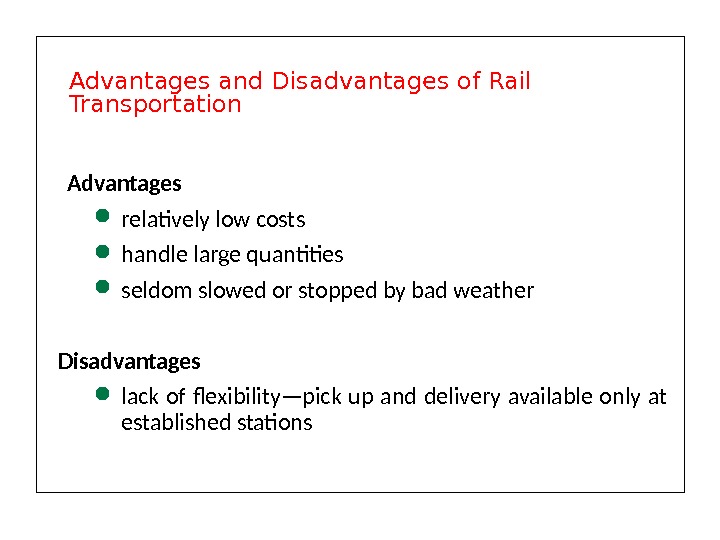
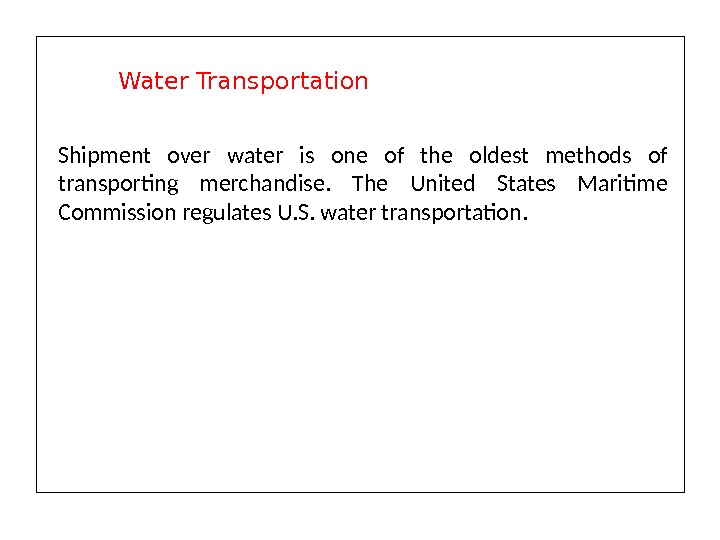
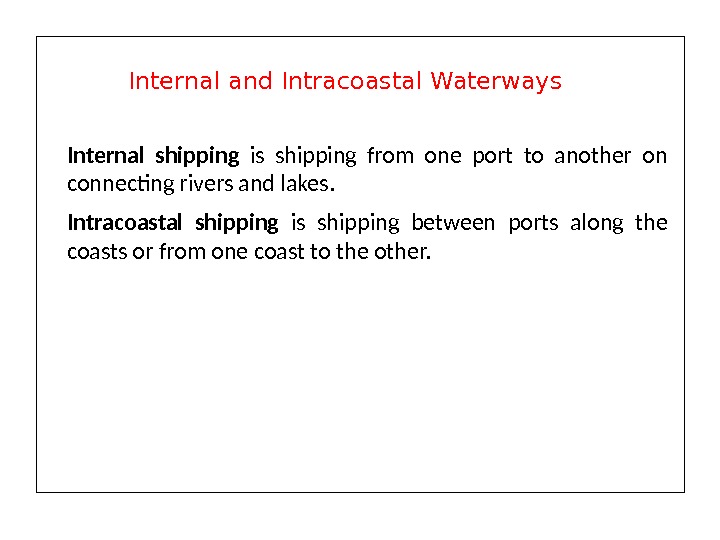
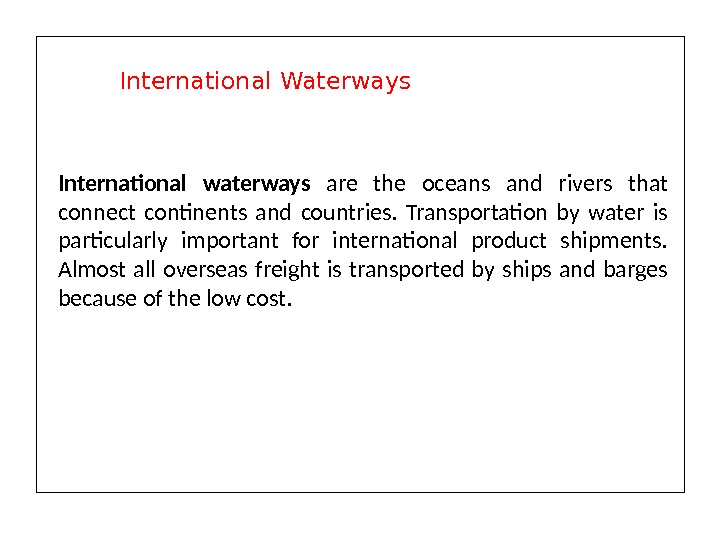
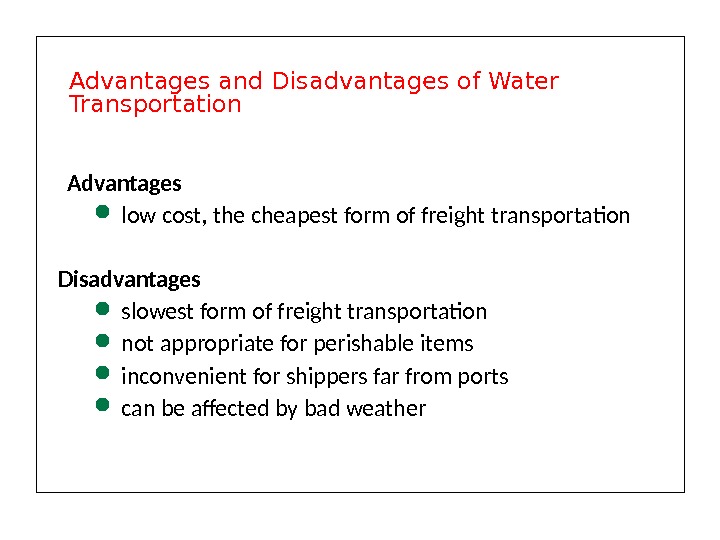
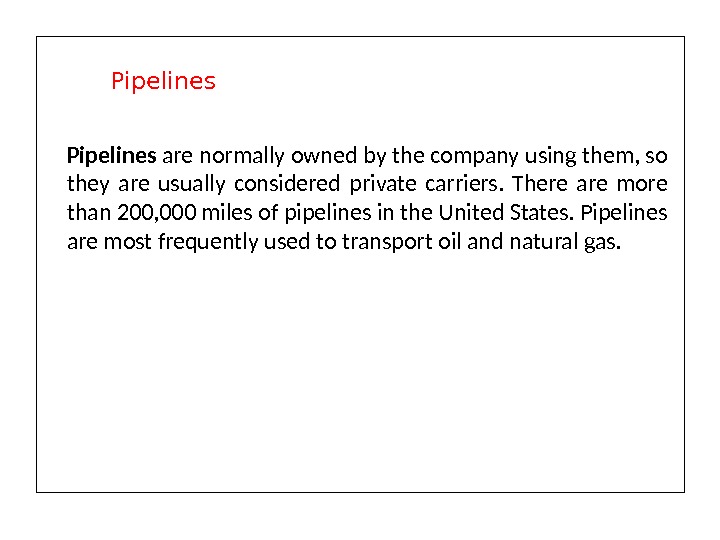
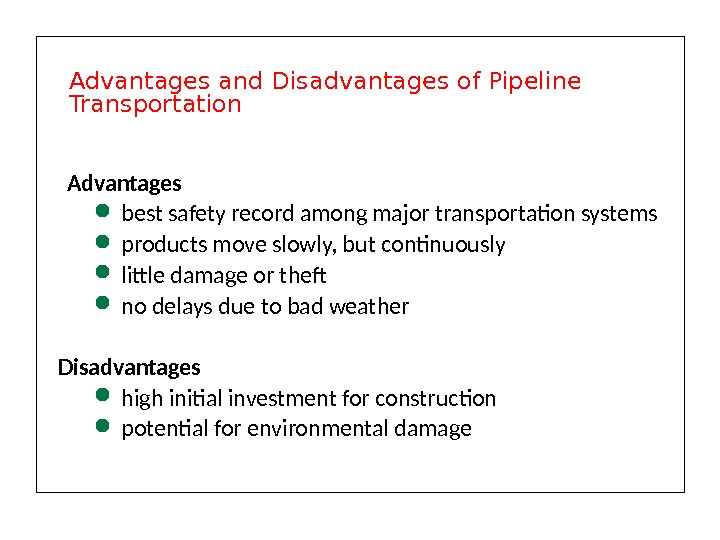
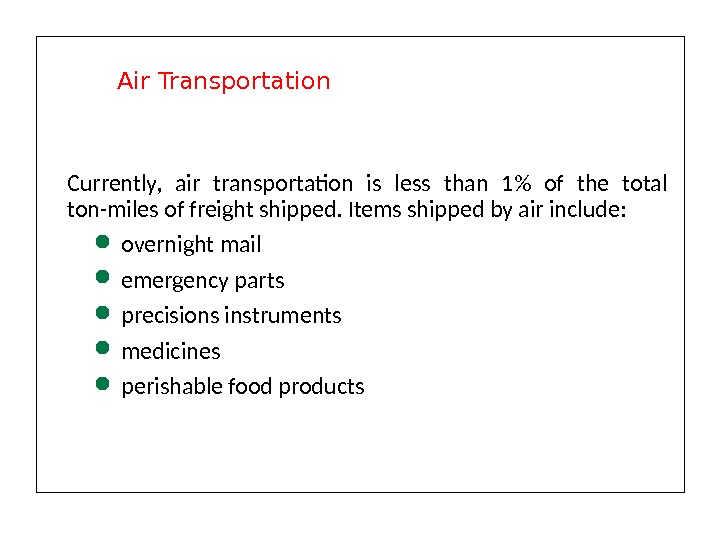

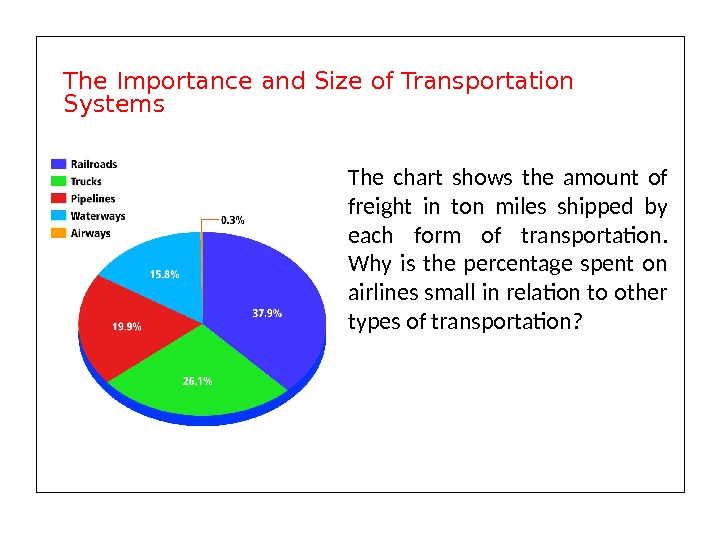
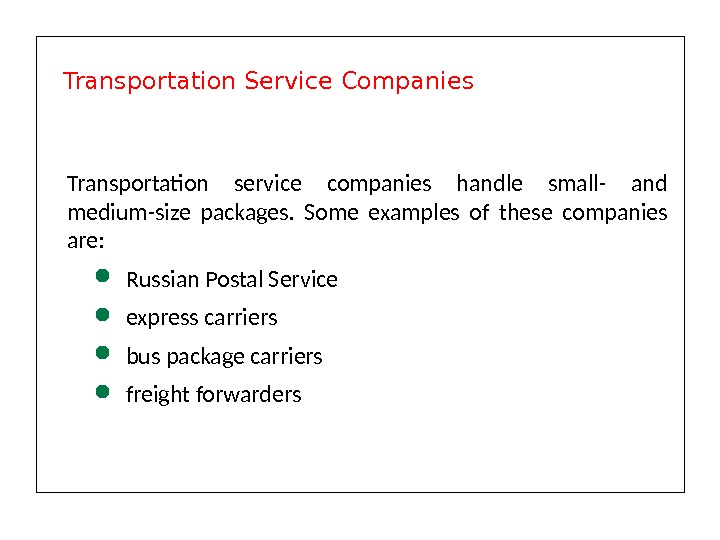
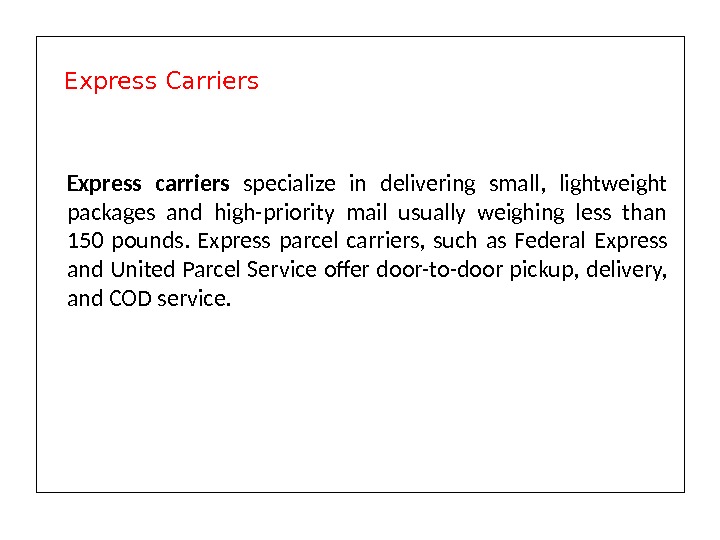


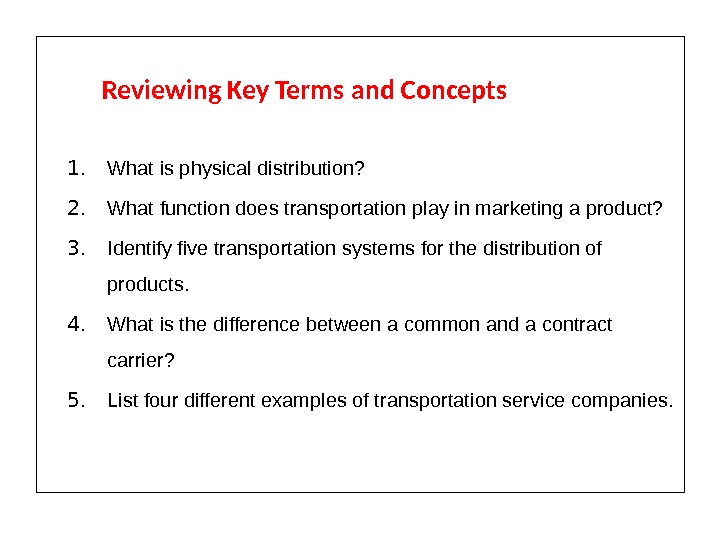
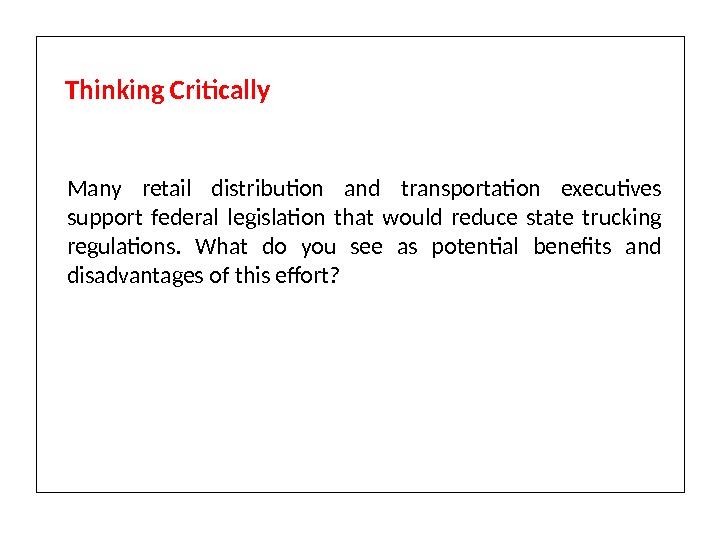
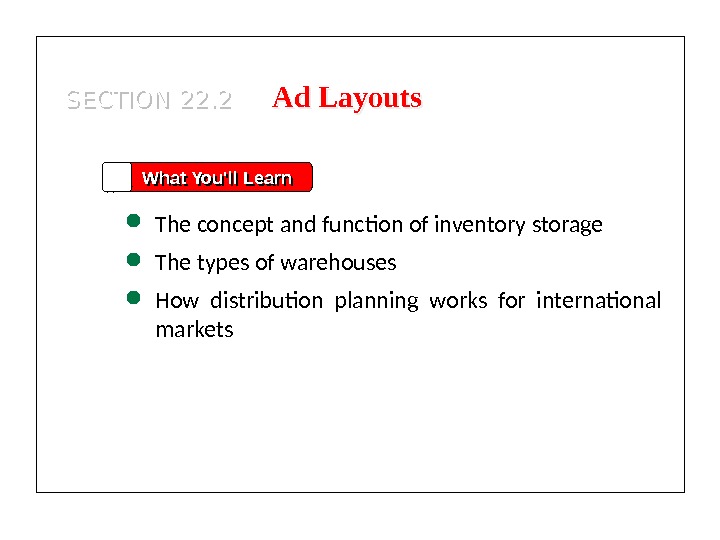
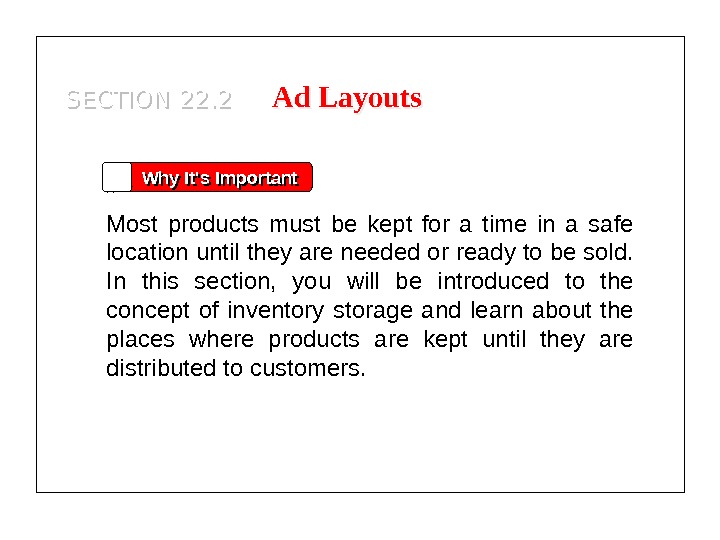

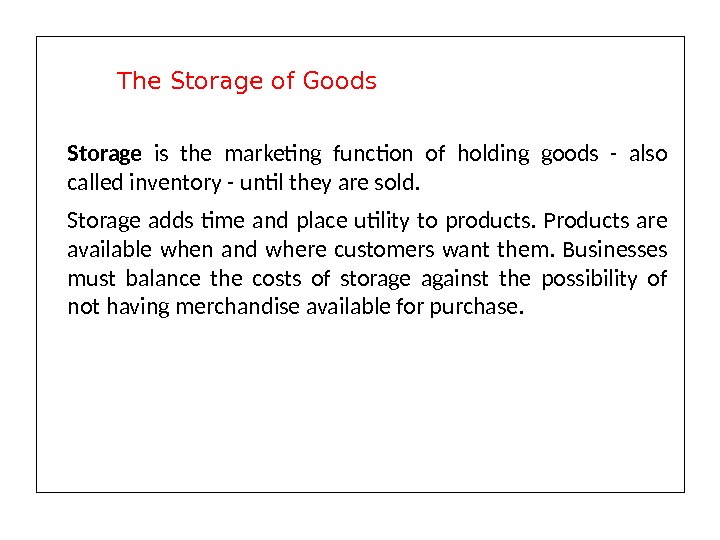
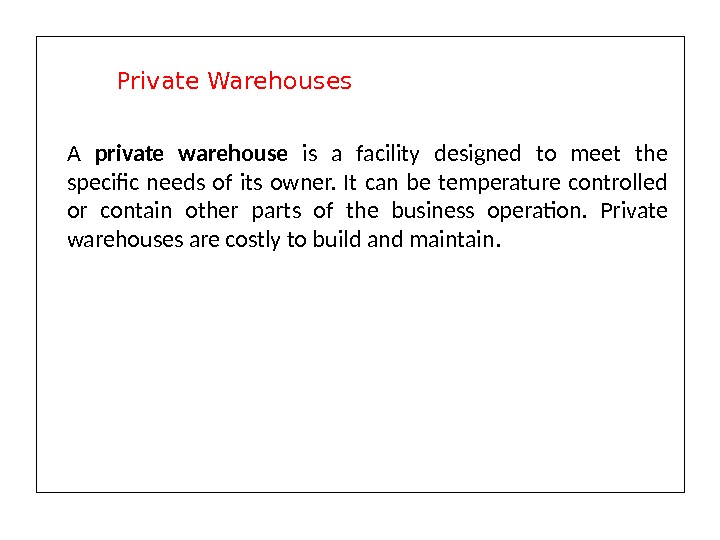
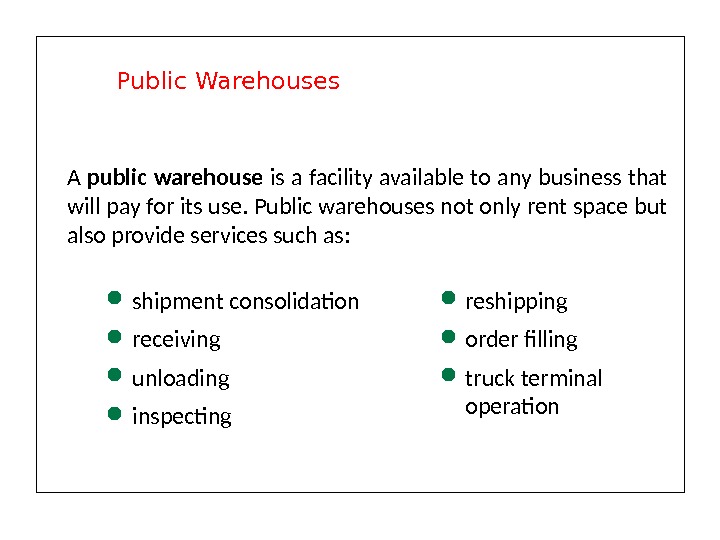
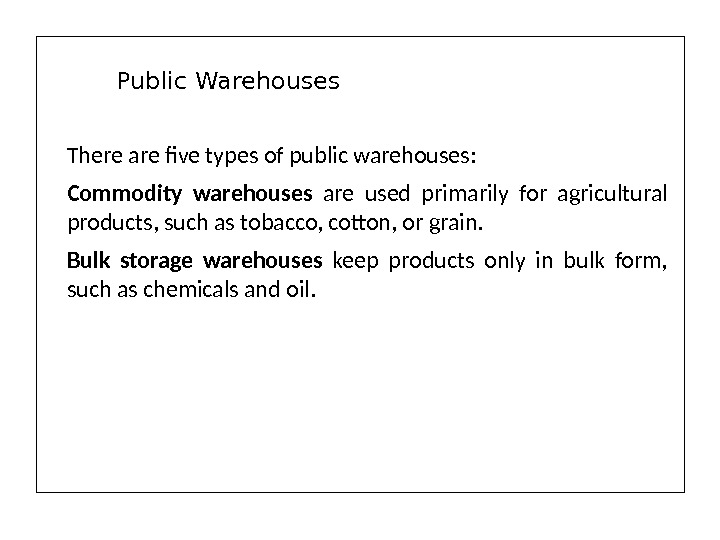
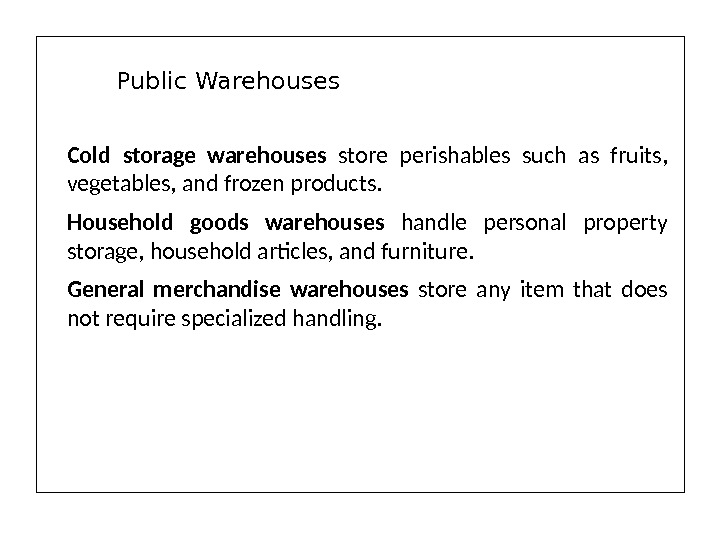
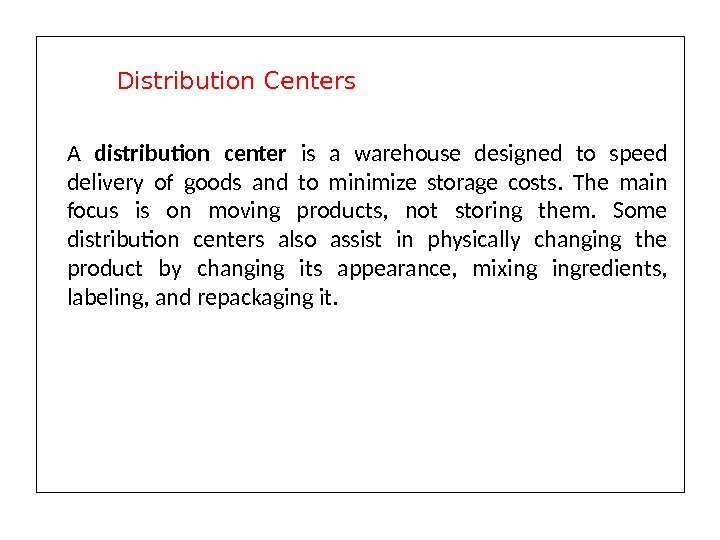
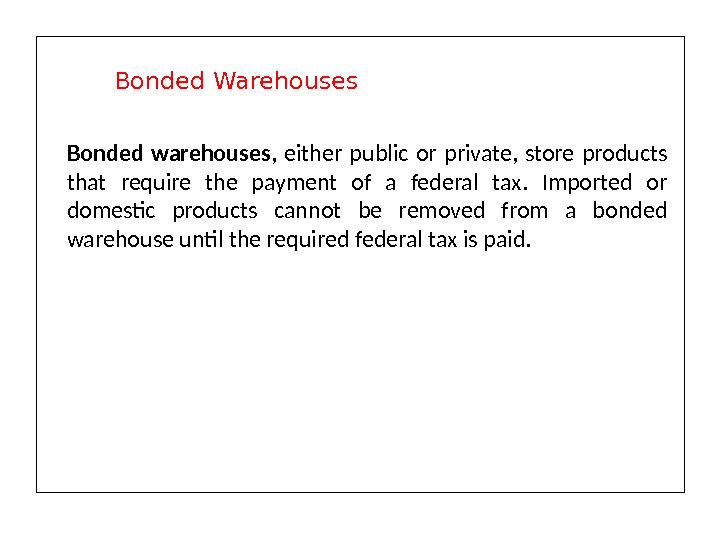
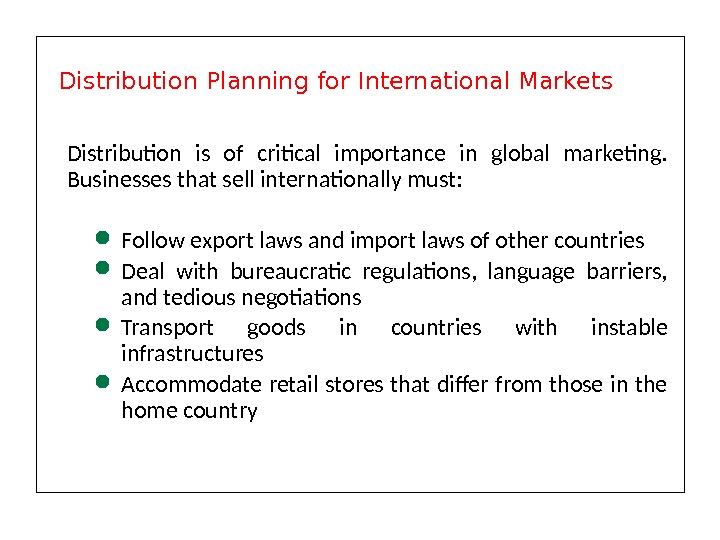

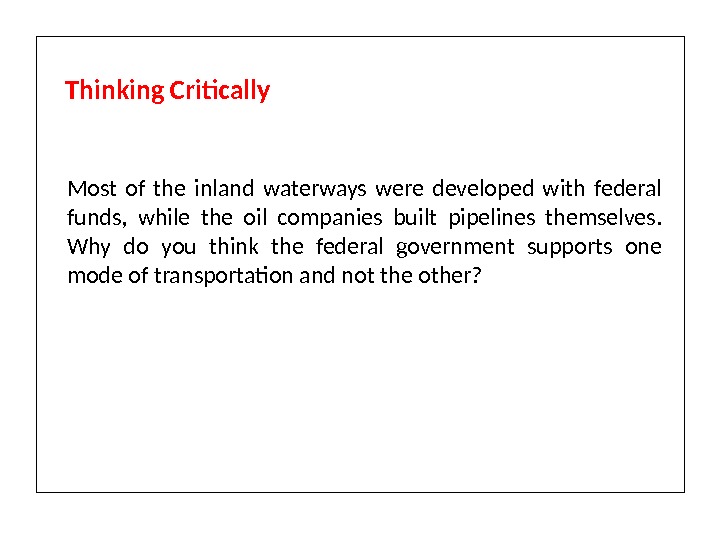

marketing_communications_session_6.ppt
- Размер: 165.8 Кб
- Количество слайдов: 49
Описание презентации Marketing communications SECTION 22. 1 What You’ll по слайдам
 Marketing communications
Marketing communications
 SECTION 22. 1 What You’ll Learn The nature and scope of physical distribution How transportation systems are used to move products The different kinds of transportation services Transportation Systems and Services
SECTION 22. 1 What You’ll Learn The nature and scope of physical distribution How transportation systems are used to move products The different kinds of transportation services Transportation Systems and Services
 SECTION 22. 1 Why It’s Important To gain a competitive advantage and succeed in today’s business environment, you will want to learn how businesses are delivering products to buyers around the country and the world. Transportation Systems and Services
SECTION 22. 1 Why It’s Important To gain a competitive advantage and succeed in today’s business environment, you will want to learn how businesses are delivering products to buyers around the country and the world. Transportation Systems and Services
 SECTION 22. 1 Key Terms physical distribution transportation common carrier private carrier exempt carrier ton-mile carload freight forwarders Transportation Systems and Services
SECTION 22. 1 Key Terms physical distribution transportation common carrier private carrier exempt carrier ton-mile carload freight forwarders Transportation Systems and Services
 Physical distribution , also known as logistics, comprises all the activities that help to ensure that the right amount of product is delivered to the right place at the right time. Between 20 to 25 percent of the value of a product can be assigned to physical distribution expenses. The Nature and Scope of Physical Distribution
Physical distribution , also known as logistics, comprises all the activities that help to ensure that the right amount of product is delivered to the right place at the right time. Between 20 to 25 percent of the value of a product can be assigned to physical distribution expenses. The Nature and Scope of Physical Distribution
 Types of Transportation is the marketing function of moving products from a seller to a buyer. There are five major transportation forms that move products: motor carriers railroads waterways pipelines air carriers
Types of Transportation is the marketing function of moving products from a seller to a buyer. There are five major transportation forms that move products: motor carriers railroads waterways pipelines air carriers
 Trucks (or motor carriers) are the most frequently used form of transportation. They carry higher-valued products that are expensive to carry in inventory. Businesses use trucks for virtually all intracity (within a city) shipping and for 26% of the intercity (between cities) freight traffic in the United States. Trucking
Trucks (or motor carriers) are the most frequently used form of transportation. They carry higher-valued products that are expensive to carry in inventory. Businesses use trucks for virtually all intracity (within a city) shipping and for 26% of the intercity (between cities) freight traffic in the United States. Trucking
 Businesses that use trucks to move their products can use: for-hire carriers private carriers a combination of both Types of Carriers
Businesses that use trucks to move their products can use: for-hire carriers private carriers a combination of both Types of Carriers
 For-hire carriers include common carriers and contract carriers. Common carriers provide transportation services to any business in its operating area for a fee. A contract carrier provides equipment and drivers for specific routes, according to agreements with the shipper. Types of Carriers
For-hire carriers include common carriers and contract carriers. Common carriers provide transportation services to any business in its operating area for a fee. A contract carrier provides equipment and drivers for specific routes, according to agreements with the shipper. Types of Carriers
 Private carriers transport goods for an individual business. Starting a private carrier fleet can require significant capital, but a business that regularly ships a large amount of merchandise may like the flexibility of owning its own means of transporting its products. Types of Carriers
Private carriers transport goods for an individual business. Starting a private carrier fleet can require significant capital, but a business that regularly ships a large amount of merchandise may like the flexibility of owning its own means of transporting its products. Types of Carriers
 Exempt carriers , which commonly carry agricultural products, are free from direct regulation of rates and operating procedures. Exempt carrier status can also be granted to local transportation firms that make short-distance deliveries within specified trading areas in cities. Types of Carriers
Exempt carriers , which commonly carry agricultural products, are free from direct regulation of rates and operating procedures. Exempt carrier status can also be granted to local transportation firms that make short-distance deliveries within specified trading areas in cities. Types of Carriers
 Advantages door-to-door delivery reduced packaging costs for some products rapid deliveries Disadvantages susceptibility to delays due to traffic jams, equipment breakdowns, and traffic accidents size and weight restrictions enforced by states. Advantages and Disadvantages of Truck Transportation
Advantages door-to-door delivery reduced packaging costs for some products rapid deliveries Disadvantages susceptibility to delays due to traffic jams, equipment breakdowns, and traffic accidents size and weight restrictions enforced by states. Advantages and Disadvantages of Truck Transportation
 Physical distribution involves the functions of: order processing transportation storage stock handling inventory control Physical Distribution
Physical distribution involves the functions of: order processing transportation storage stock handling inventory control Physical Distribution
 Order Processing The purchase of a product initiates the movement of products through a physical distribution system. Transportation involves the actual physical movement of products. It is estimated that up to 8 percent of a company’s sales are spent on the transportation function. Physical Distribution
Order Processing The purchase of a product initiates the movement of products through a physical distribution system. Transportation involves the actual physical movement of products. It is estimated that up to 8 percent of a company’s sales are spent on the transportation function. Physical Distribution
 Storage The storage function facilitates the actual movement of products through the distribution channel as products are sold. Stock Handling Receiving, checking, and marking items for sale are an important step in the physical distribution system. Inventory Control Proper inventory control ensures that products are kept in sufficient quantities and available when requested by customers. Physical Distribution
Storage The storage function facilitates the actual movement of products through the distribution channel as products are sold. Stock Handling Receiving, checking, and marking items for sale are an important step in the physical distribution system. Inventory Control Proper inventory control ensures that products are kept in sufficient quantities and available when requested by customers. Physical Distribution
 Trains transport nearly 38% of the total intercity ton-miles (the movement of one ton of freight one mile) of freight. Trains are important for moving heavy and bulky freight, such as coal, steel, lumber, chemicals, grain, farm equipment, and automobiles, over long distances. Rail Transportation
Trains transport nearly 38% of the total intercity ton-miles (the movement of one ton of freight one mile) of freight. Trains are important for moving heavy and bulky freight, such as coal, steel, lumber, chemicals, grain, farm equipment, and automobiles, over long distances. Rail Transportation
 Railroads offer several specialized and innovative pricing and delivery services, including: piggyback service fishyback service specialized service package arrangements diversion-in-transit processing-in-transit Rail Pricing and Delivery Systems
Railroads offer several specialized and innovative pricing and delivery services, including: piggyback service fishyback service specialized service package arrangements diversion-in-transit processing-in-transit Rail Pricing and Delivery Systems
 Piggyback service gets its name from carrying (piggybacking) loaded truck trailers over land on railroad flatcars. Fishyback service is shipping loaded truck trailers over water on ships and barges. Specialized service involves transporting items such as milk, fresh vegetables, or hazardous materials in specially designed freight cars. Package (or pool) arrangements allow several shippers who are sending their items to a common destination to combine their items to fill an entire carload (the amount required to fill a boxcar). Rail Pricing and Delivery Systems
Piggyback service gets its name from carrying (piggybacking) loaded truck trailers over land on railroad flatcars. Fishyback service is shipping loaded truck trailers over water on ships and barges. Specialized service involves transporting items such as milk, fresh vegetables, or hazardous materials in specially designed freight cars. Package (or pool) arrangements allow several shippers who are sending their items to a common destination to combine their items to fill an entire carload (the amount required to fill a boxcar). Rail Pricing and Delivery Systems
 Diversion-in-transit service allows the redirection of carloads already en route. Processing-in-transit permits shippers to have products processed, repackaged, and assembled while in transit to their final destination. Rail Pricing and Delivery Systems
Diversion-in-transit service allows the redirection of carloads already en route. Processing-in-transit permits shippers to have products processed, repackaged, and assembled while in transit to their final destination. Rail Pricing and Delivery Systems
 Advantages relatively low costs handle large quantities seldom slowed or stopped by bad weather Disadvantages lack of flexibility—pick up and delivery available only at established stations. Advantages and Disadvantages of Rail Transportation
Advantages relatively low costs handle large quantities seldom slowed or stopped by bad weather Disadvantages lack of flexibility—pick up and delivery available only at established stations. Advantages and Disadvantages of Rail Transportation
 Shipment over water is one of the oldest methods of transporting merchandise. The United States Maritime Commission regulates U. S. water transportation. Water Transportation
Shipment over water is one of the oldest methods of transporting merchandise. The United States Maritime Commission regulates U. S. water transportation. Water Transportation
 Internal shipping is shipping from one port to another on connecting rivers and lakes. Intracoastal shipping is shipping between ports along the coasts or from one coast to the other. Internal and Intracoastal Waterways
Internal shipping is shipping from one port to another on connecting rivers and lakes. Intracoastal shipping is shipping between ports along the coasts or from one coast to the other. Internal and Intracoastal Waterways
 International waterways are the oceans and rivers that connect continents and countries. Transportation by water is particularly important for international product shipments. Almost all overseas freight is transported by ships and barges because of the low cost. International Waterways
International waterways are the oceans and rivers that connect continents and countries. Transportation by water is particularly important for international product shipments. Almost all overseas freight is transported by ships and barges because of the low cost. International Waterways
 Advantages low cost, the cheapest form of freight transportation Disadvantages slowest form of freight transportation not appropriate for perishable items inconvenient for shippers far from ports can be affected by bad weather. Advantages and Disadvantages of Water Transportation
Advantages low cost, the cheapest form of freight transportation Disadvantages slowest form of freight transportation not appropriate for perishable items inconvenient for shippers far from ports can be affected by bad weather. Advantages and Disadvantages of Water Transportation
 Pipelines are normally owned by the company using them, so they are usually considered private carriers. There are more than 200, 000 miles of pipelines in the United States. Pipelines are most frequently used to transport oil and natural gas. Pipelines
Pipelines are normally owned by the company using them, so they are usually considered private carriers. There are more than 200, 000 miles of pipelines in the United States. Pipelines are most frequently used to transport oil and natural gas. Pipelines
 Advantages best safety record among major transportation systems products move slowly, but continuously little damage or thef no delays due to bad weather Disadvantages high initial investment for construction potential for environmental damage. Advantages and Disadvantages of Pipeline Transportation
Advantages best safety record among major transportation systems products move slowly, but continuously little damage or thef no delays due to bad weather Disadvantages high initial investment for construction potential for environmental damage. Advantages and Disadvantages of Pipeline Transportation
 Currently, air transportation is less than 1% of the total ton-miles of freight shipped. Items shipped by air include: overnight mail emergency parts precisions instruments medicines perishable food products Air Transportation
Currently, air transportation is less than 1% of the total ton-miles of freight shipped. Items shipped by air include: overnight mail emergency parts precisions instruments medicines perishable food products Air Transportation
 Advantages speed, overnight delivery possible reduces inventory expenses and storage costs Disadvantages the most expensive form of transportation possible delays from mechanical breakdowns and bad weather. Advantages and Disadvantages of Air Transportation
Advantages speed, overnight delivery possible reduces inventory expenses and storage costs Disadvantages the most expensive form of transportation possible delays from mechanical breakdowns and bad weather. Advantages and Disadvantages of Air Transportation
 The chart shows the amount of freight in ton miles shipped by each form of transportation. Why is the percentage spent on airlines small in relation to other types of transportation? The Importance and Size of Transportation Systems
The chart shows the amount of freight in ton miles shipped by each form of transportation. Why is the percentage spent on airlines small in relation to other types of transportation? The Importance and Size of Transportation Systems
 Transportation service companies handle small- and medium-size packages. Some examples of these companies are: Russian Postal Service express carriers bus package carriers freight forwarders. Transportation Service Companies
Transportation service companies handle small- and medium-size packages. Some examples of these companies are: Russian Postal Service express carriers bus package carriers freight forwarders. Transportation Service Companies
 Express carriers specialize in delivering small, lightweight packages and high-priority mail usually weighing less than 150 pounds. Express parcel carriers, such as Federal Express and United Parcel Service offer door-to-door pickup, delivery, and COD service. Express Carriers
Express carriers specialize in delivering small, lightweight packages and high-priority mail usually weighing less than 150 pounds. Express parcel carriers, such as Federal Express and United Parcel Service offer door-to-door pickup, delivery, and COD service. Express Carriers
 Bus package carriers provide transportation services for packages weighing less than 100 pounds. Bus package carriers can provide same-day or next-day service to cities and towns along their scheduled routes. Bus Package Carriers
Bus package carriers provide transportation services for packages weighing less than 100 pounds. Bus package carriers can provide same-day or next-day service to cities and towns along their scheduled routes. Bus Package Carriers
 Freight forwarders are private companies that combine less-than carload or less-than truckload shipments from several different businesses and deliver them to their destinations. By combining shipments, freight forwarders can ofen obtain truckload or carload rates and lower transportation costs for shippers. Freight Forwarders
Freight forwarders are private companies that combine less-than carload or less-than truckload shipments from several different businesses and deliver them to their destinations. By combining shipments, freight forwarders can ofen obtain truckload or carload rates and lower transportation costs for shippers. Freight Forwarders
 Reviewing Key Terms and Concepts 1. What is physical distribution? 2. What function does transportation play in marketing a product? 3. Identify five transportation systems for the distribution of products. 4. What is the difference between a common and a contract carrier? 5. List four different examples of transportation service companies.
Reviewing Key Terms and Concepts 1. What is physical distribution? 2. What function does transportation play in marketing a product? 3. Identify five transportation systems for the distribution of products. 4. What is the difference between a common and a contract carrier? 5. List four different examples of transportation service companies.
 Many retail distribution and transportation executives support federal legislation that would reduce state trucking regulations. What do you see as potential benefits and disadvantages of this effort? Thinking Critically
Many retail distribution and transportation executives support federal legislation that would reduce state trucking regulations. What do you see as potential benefits and disadvantages of this effort? Thinking Critically
 SECTION 22. 2 What You’ll Learn The concept and function of inventory storage The types of warehouses How distribution planning works for international markets Ad Layouts
SECTION 22. 2 What You’ll Learn The concept and function of inventory storage The types of warehouses How distribution planning works for international markets Ad Layouts
 Why It’s Important Most products must be kept for a time in a safe location until they are needed or ready to be sold. In this section, you will be introduced to the concept of inventory storage and learn about the places where products are kept until they are distributed to customers. SECTION 22. 2 Ad Layouts
Why It’s Important Most products must be kept for a time in a safe location until they are needed or ready to be sold. In this section, you will be introduced to the concept of inventory storage and learn about the places where products are kept until they are distributed to customers. SECTION 22. 2 Ad Layouts
 Key Terms storage private warehouse public warehouse carrier distribution center bonded warehouse. SECTION 22. 2 Ad Layouts
Key Terms storage private warehouse public warehouse carrier distribution center bonded warehouse. SECTION 22. 2 Ad Layouts
 Storage is the marketing function of holding goods — also called inventory — until they are sold. Storage adds time and place utility to products. Products are available when and where customers want them. Businesses must balance the costs of storage against the possibility of not having merchandise available for purchase. The Storage of Goods
Storage is the marketing function of holding goods — also called inventory — until they are sold. Storage adds time and place utility to products. Products are available when and where customers want them. Businesses must balance the costs of storage against the possibility of not having merchandise available for purchase. The Storage of Goods
 A private warehouse is a facility designed to meet the specific needs of its owner. It can be temperature controlled or contain other parts of the business operation. Private warehouses are costly to build and maintain. Private Warehouses
A private warehouse is a facility designed to meet the specific needs of its owner. It can be temperature controlled or contain other parts of the business operation. Private warehouses are costly to build and maintain. Private Warehouses
 A public warehouse is a facility available to any business that will pay for its use. Public warehouses not only rent space but also provide services such as: Public Warehouses shipment consolidation receiving unloading inspecting reshipping order filling truck terminal operation
A public warehouse is a facility available to any business that will pay for its use. Public warehouses not only rent space but also provide services such as: Public Warehouses shipment consolidation receiving unloading inspecting reshipping order filling truck terminal operation
 There are five types of public warehouses: Commodity warehouses are used primarily for agricultural products, such as tobacco, cotton, or grain. Bulk storage warehouses keep products only in bulk form, such as chemicals and oil. Public Warehouses
There are five types of public warehouses: Commodity warehouses are used primarily for agricultural products, such as tobacco, cotton, or grain. Bulk storage warehouses keep products only in bulk form, such as chemicals and oil. Public Warehouses
 Cold storage warehouses store perishables such as fruits, vegetables, and frozen products. Household goods warehouses handle personal property storage, household articles, and furniture. General merchandise warehouses store any item that does not require specialized handling. Public Warehouses
Cold storage warehouses store perishables such as fruits, vegetables, and frozen products. Household goods warehouses handle personal property storage, household articles, and furniture. General merchandise warehouses store any item that does not require specialized handling. Public Warehouses
 A distribution center is a warehouse designed to speed delivery of goods and to minimize storage costs. The main focus is on moving products, not storing them. Some distribution centers also assist in physically changing the product by changing its appearance, mixing ingredients, labeling, and repackaging it. Distribution Centers
A distribution center is a warehouse designed to speed delivery of goods and to minimize storage costs. The main focus is on moving products, not storing them. Some distribution centers also assist in physically changing the product by changing its appearance, mixing ingredients, labeling, and repackaging it. Distribution Centers
 Bonded warehouses , either public or private, store products that require the payment of a federal tax. Imported or domestic products cannot be removed from a bonded warehouse until the required federal tax is paid. Bonded Warehouses
Bonded warehouses , either public or private, store products that require the payment of a federal tax. Imported or domestic products cannot be removed from a bonded warehouse until the required federal tax is paid. Bonded Warehouses
 Distribution is of critical importance in global marketing. Businesses that sell internationally must: Follow export laws and import laws of other countries Deal with bureaucratic regulations, language barriers, and tedious negotiations Transport goods in countries with instable infrastructures Accommodate retail stores that differ from those in the home country. Distribution Planning for International Markets
Distribution is of critical importance in global marketing. Businesses that sell internationally must: Follow export laws and import laws of other countries Deal with bureaucratic regulations, language barriers, and tedious negotiations Transport goods in countries with instable infrastructures Accommodate retail stores that differ from those in the home country. Distribution Planning for International Markets
 Reviewing Key Terms and Concepts 1. What is the function of storage? 2. Give four reasons why merchandise is stored. 3. What is a warehouse? List the four types of warehouses. 4. How does a distribution center differ from a warehouse? 5. Describe at least three reasons why planning is important for distribution in international markets.
Reviewing Key Terms and Concepts 1. What is the function of storage? 2. Give four reasons why merchandise is stored. 3. What is a warehouse? List the four types of warehouses. 4. How does a distribution center differ from a warehouse? 5. Describe at least three reasons why planning is important for distribution in international markets.
 Most of the inland waterways were developed with federal funds, while the oil companies built pipelines themselves. Why do you think the federal government supports one mode of transportation and not the other? Thinking Critically
Most of the inland waterways were developed with federal funds, while the oil companies built pipelines themselves. Why do you think the federal government supports one mode of transportation and not the other? Thinking Critically
 Questions?
Questions?

